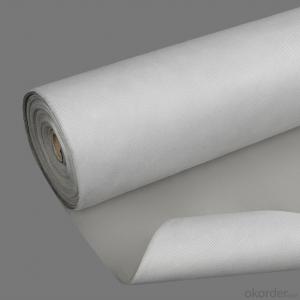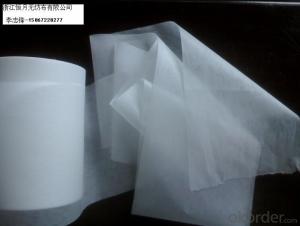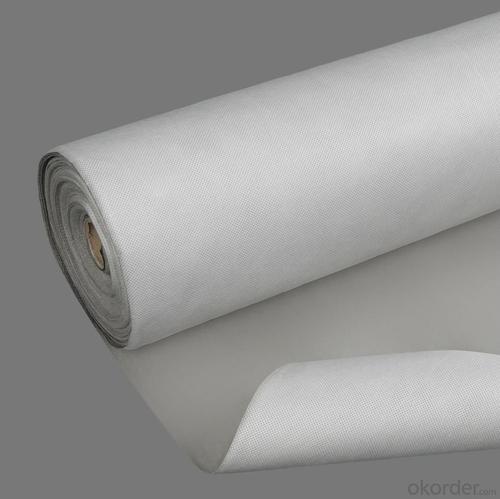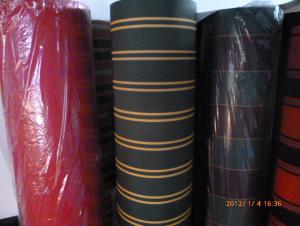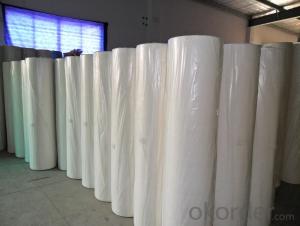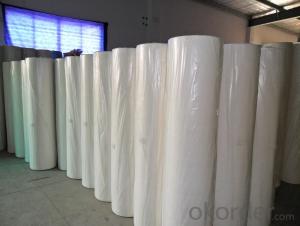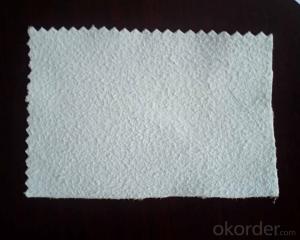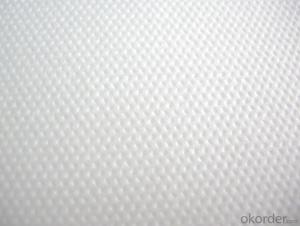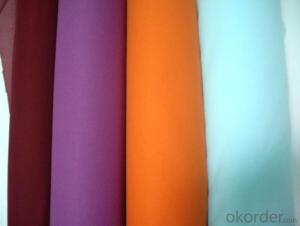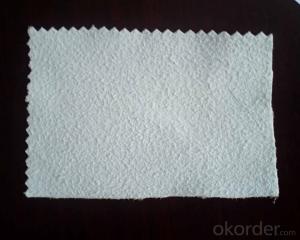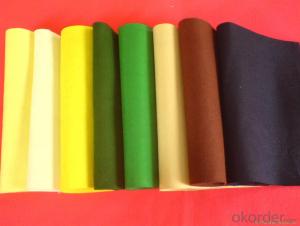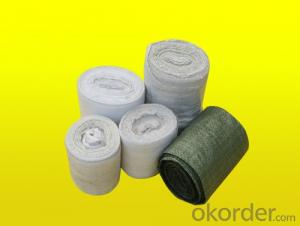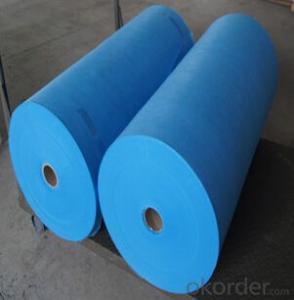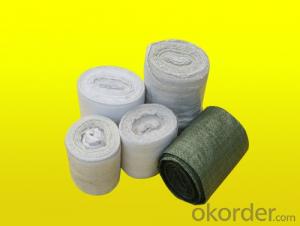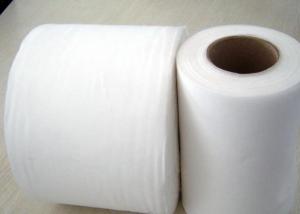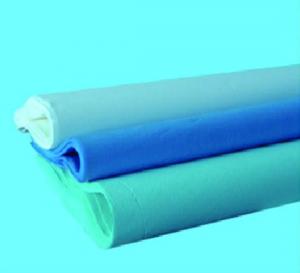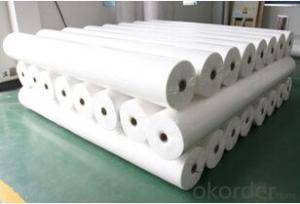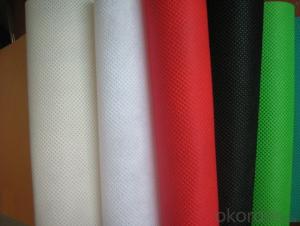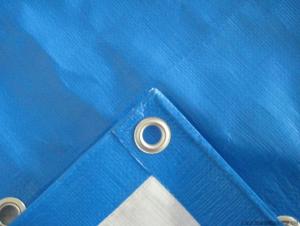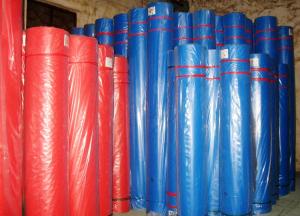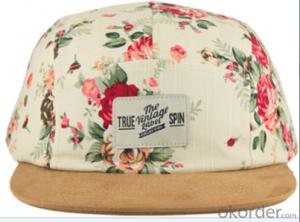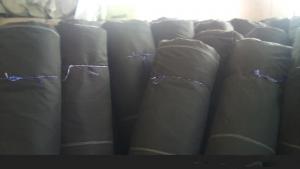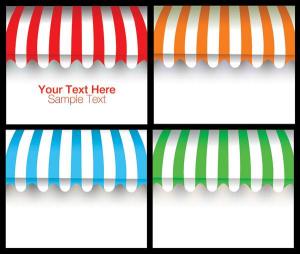high quality pp anti-static SM non woven fabric in roll
- Loading Port:
- Shanghai
- Payment Terms:
- TT OR LC
- Min Order Qty:
- 1000 roll
- Supply Capability:
- 10000 roll/month
OKorder Service Pledge
OKorder Financial Service
You Might Also Like
 PP non woven weed control mat is made of environmentally friendly raw materials, pp spunbond nonwoven fabric. It used to prevent the growth of weed, without the use of potentially dangerous chemical sprays or labor intensive hoeing. Once installed, weed mat will continue providing protection for years without maintenance.
PP non woven weed control mat is made of environmentally friendly raw materials, pp spunbond nonwoven fabric. It used to prevent the growth of weed, without the use of potentially dangerous chemical sprays or labor intensive hoeing. Once installed, weed mat will continue providing protection for years without maintenance.
They are permeable fabrics, which allow air, water and nutrients to pass through, and designed to block out the sun to reduce photosynthesis and stop weed growth.

The use of landscaping fabrics has become extremely popular in recent years for many reasons:
1. Leisure time is maximised - the need for weeding and on-going maintenance is minimised
2. Environmentally friendly - no need for chemical based weed killers
3. Promotes healthier plants - it allows the soil to breath and water to permeate
We offer different types of weed control fabrics to suit all applications and budgets.
1. Available in a range of sizes & materials to suit various applications from small to large landscaping projects, in both commercial and domestic situations.
2. All our landscape fabrics are UV stabilised
3. Ideal for use under paths, patios, decking, paving, bark mulch, gravel etc.
FEATURES:
1. Weed suppressant and drainage control landscaping fabric
2. Spun bonded non-woven fabric – will not fray when cut
3. Easy to use
4. Environmentally friendly
5. Allows water, air and nutrients through, suppressing weeds without the use of chemicals
6. Good alternative to Plantex® where cost is a factor
7. UV Stabilised
8. Reduces the level of watering required due to the slower rate of water evaporation
FUNCTION:
1. Cover crops in the ground surface,prevent weeds and against the insect
2. Controlling soil humidity and the temperature
3. Does not affect the growth of the crops
4. Protects plants from harmfully solar radiation
5. Air permeability, water permeability help crops growth.
6. Mothproof, eco-friendly, breathable, anti-bacteria, tear-resistant, fusible
APPLICATIONS:
1. Weed block for landscaped garden beds
2. Permeable liners for planters (stops soil erosion)
3. Weed control under wooden decking
4. Geotextile for separating aggregate / soils under walkway blocks or bricks
5. Assists in preventing paving from settling unevenly
6. Landscape fabric prevents soil erosion
Health - Hygiene & Medical
Surgical Gowns
Gloves
Face Masks
Foot covers
Diapers
Caps
Bedsheets
Curtains
Pillow Covers
Slippers
Packaging
Sleeping Bags
Tarpaulins
Tents
Artificial Leather
Bags for Rice/Sugar etc.
Luggage
Vacuum Cleaner Bags
Tea and Coffee Bags
Buff Pads
Shopping Bags
Agriculture
Crop Covers
Turf Protections
Nursery Over wintering
Weed Control Fabrics
Root Bags
Containers
Capillary Matting
Other types of covers
Furniture Upholstery
Roofing and Tile Underlayment
Acoustical Ceilings
Insulation
House wrap
Pipe wrap
Sofa and Mattress Lining
Shoes & Garments
Coveralls
Pillow cases
Airline Headrests
Interlinings
Clothing and Glove insulation
Bra and Shoulder Padding
ADVANTAGES:
1. Lower labour costs as no weeding maintenance for years;
2. Water seeps through and can conserve soil moisture for improved growing conditions;
3. Air escapes – humidity rises through the mat for a more controlled growing environment;
4. Increase crop yields close to 25% due to improved growing conditions and absence of water stress and competition of nutrients absorption from weeds;
5. Minimises bacteria and fungus problems especially Algae;
6. Strong, woven construction or pressed fibre sheet resists tears and punctures;
7. Resistant to mildew, rot, water, sunlight and most of the agricultural chemicals
8. Fertilizer is applied on the mat, thus helping the owner or estate manager to monitor the progress of manuring;
9. Prevents soil erosion or leaching of soil nutrients or fertilizers applied;
10. Environmental friendly.
- Q: Application of Biological Enzyme in Textile Processing
- Hemicellulase, ligninase in the textile processing applications: natural cellulose fibers contain hemicellulose and lignin, especially linen fiber content is high, do not remove hemicellulose and lignin, extreme impact The spinnability of the fiber, through hemicellulase and ligninase treatment, can most of the removal of hemicellulose and lignin
- Q: What is the amount of alkali in the textile mill
- Diminishing, as the name implies, is to reduce the amount of something. Here refers to the polyester fabric on the corrosion treatment, the polyester fiber surface corrosion does not affect the performance of the groove, in order to achieve a soft, breathable good purpose.
- Q: The difference between double distribution and processing in textile fabrics
- Distribution - that is, you buy fabrics, only the money on the line, all of them will give you a good job.
- Q: What are the policy measures developed by the Bangladeshi government for their exports?
- China's textile enterprises have come out of the country, to Africa, Southeast America and some Asian countries to invest in factories, in order to achieve "to avoid obstacles, curve exports" purposes.
- Q: The international market of textile industry
- Trade protectionism is rampant and trade frictions will intensify. Leading to uncertainties in the trade environment between the trading countries. The textile faces the same mistakes as temporary tariffs and rations. China's exports will also be affected by higher production costs, financing difficulties for export enterprises and rising financing costs, export policy adjustment uncertainty, the impact of RMB appreciation pressure
- Q: What is the specialty of textile science and engineering?
- The research contents of the textile discipline have changed obviously, and the cross and infiltration of the disciplines such as bioengineering, environmental protection engineering and material science engineering have become more and more close.
- Q: Mechanical characteristics of textile machinery
- The continuity of textile machinery is subject to the process. For example: spinning 20.8 ~ 27.8 cotton yarn, from cotton to spinning the total draw ratio of 13900 ~ 19000 times. The process needs to go through the cleaning of cotton, carding, parallel, roving, spun yarn and other processes, it must be distributed in the process of the corresponding equipment to complete.
- Q: What is the earliest textile raw material?
- The ancient Roman Empire was first through the "Silk Road" on the spread of silk, said China as "silk country"
- Q: What is the imo standard in the textile industry?
- The Global Organic Textiles Standard (GOTS) recognizes IMO certification and produces a consistent technical standard for all major world markets for textile and garment production.
- Q: What is the use of polyurethane TPU hot melt adhesives in textiles?
- Lining the general requirements of the hot melt adhesive is colorless and tasteless, soft texture, fast bonding, resistance to dry and wet wash, glue can not affect the fabric, resistant to light and so on. Various types of hot melt adhesives can be used with a wide range of hot melt adhesives. Most of them are ethylene-vinyl acetate (EVA) hot melt adhesives, polyamide hot melt adhesives and high pressure polyethylene (HDPE) heat Melt powder, and different uses of hot melt adhesive and processing methods are also different.
Send your message to us
high quality pp anti-static SM non woven fabric in roll
- Loading Port:
- Shanghai
- Payment Terms:
- TT OR LC
- Min Order Qty:
- 1000 roll
- Supply Capability:
- 10000 roll/month
OKorder Service Pledge
OKorder Financial Service
Similar products
Hot products
Hot Searches
Related keywords
